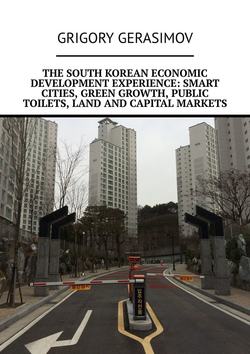Читать книгу The South Korean economic development experience: smart cities, green growth, public toilets, land and capital markets - Grigory Gerasimov - Страница 3
На сайте Литреса книга снята с продажи.
Challenges and Prospects of the Korean Economy
ОглавлениеThe International Monetary Fund (IMF) classifies South Korea as an Advanced Economy and the Bank for International Settlements (BIS) classifies South Korea in the emerging market group. The Financial Times Stock Exchange (FTSE) classifies South Korea as a Developed Market since 2009 and MSCI classifies South Korea as a part of Emerging Market Indices. The World Bank made a comprehensive study for 101 countries and suggested that Korea in the list of countries, which overcame middle income growth traps successfully. South Korea soon to expect become a member of so-called 50—30 club: country with population over 50 million and per capita income higher than 30,000 USD. Korea became the first aid recipient-turned-donor country of the world. Korea joined OECD Development Assistance Committee (DAC) in 2010, in the middle of an economic crisis and Korean government increased the budget to support foreign aid activities. Korea was the only economy with sovereign rating upgraded by all three credit rating agencies (CRA) during crisis: S&P upgraded from A+ to AA- on September 15, 2015. Korea is the first Asian country that signed Free Trade Agreements (FTA) with both US and the EU. Korea also signed FTA with China in 2015. It means that Korea have FTAs with all “Big Three” economies of the world. Korean economy rapidly has transformed from the least developed country to one of the most advanced economies.
There are three key sources for the past economic growth in Korea: outward-looking development strategy, flexible adaptation of economic policies and adherence to market principles. In 1950s Korea focused on import substitution industries and then switched to export promotion. From 1960s Korean government supported export promotion policies and activities. It was one of factors to maintain global competitiveness of Korean economy. By opening-up the market and encouraging competition the government failure was minimized and corruption prevented by market discipline. Korean government successfully adopted policies correspondent to economic development challenges. Entrepreneurship enabled firms to take risks for returns and lead technology development in Korea.
The potential growth in Korea is projected to decline to 2% after 2030 mainly due to shrinking working-age population, lower female and youth labor force participation rate and under-utilization of elderly population. Korea SME’s have a low productivity growth related to service sector slowdown. Major reforms are needed in following areas: dual labor market to be more flexible, financial safety net to strengthen the governance structure.
Korean economic miracle characterized differently from other countries, because in Korea economic growth was achieved with equity. Economic growth and equity came together until late 1990s in Korea. This is fundamental difference between Korean economic achievement and economic performance of other countries. Korea stands to join the club of major advanced economies. In a globalized world, the future of Korea will depend upon the competitiveness of non-tradable sectors.
